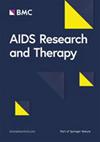在中欧和东欧的医疗保健、社区和立法环境中解决艾滋病毒耻辱化问题
IF 2.1
4区 医学
Q3 INFECTIOUS DISEASES
引用次数: 0
摘要
中欧和东欧(CEE)各国艾滋病毒感染率的激增在很大程度上是由于艾滋病毒护理工作不力以及缺乏对重点人群的全面支持造成的。医疗保健、社区和立法环境中普遍存在的污名化现象助长了这种现象。在整个中欧和东欧地区,艾滋病毒污名化和交叉污名化严重阻碍了为艾滋病毒感染者提供适当的医疗服务。医疗保健专业人员预期的和实际的(经历的)污名化,以及对泄密的恐惧,阻碍了个人进行艾滋病毒检测和参与艾滋病毒护理。此外,艾滋病毒感染的负面含义会导致来自家人、朋友、同事和公众的歧视,从而导致内在化的污名化和抑郁。艾滋病毒感染率较高的重点人群,如男男性行为者、注射毒品者、变性人和性工作者,因其行为和身份而遭受更多的羞辱和歧视。在许多中欧和东欧国家,这导致艾滋病毒在这些人群中集中流行。将艾滋病毒传播定为犯罪并惩罚性取向、吸毒、性别认同和性工作的惩罚性立法加剧了这种耻辱感。尽管艾滋病毒污名化和交叉性污名化程度很高,但在世界其他地区,许多基于证据的干预措施已经减少了污名化。在此,我们将讨论中欧和东欧各国目前正在实施的干预措施,并建议采取更多有效的循证干预措施来解决污名化问题,从而提高艾滋病护理参与率和病毒抑制率。我们的内容包括:推广检测不到 = 不传播(U = U)的信息,对医疗保健专业人员进行减少污名化的教育和培训,以患者为中心的检测和治疗方法,以及倡导非歧视性立法、政策和实践。我们还考虑采取有针对性的减少污名化干预措施,承认边缘化人群面临的更广泛挑战。在中欧和东欧,艾滋病毒污名化和交叉性污名化导致人们很少参与艾滋病毒检测服务和护理。广泛采用本综述中强调的循证干预措施来解决污名化问题,将提高艾滋病毒感染者的生活质量,改善艾滋病毒护理参与度,并最终减缓整个中欧和东欧地区飙升的艾滋病毒感染率和集中流行的趋势。本文章由计算机程序翻译,如有差异,请以英文原文为准。
Addressing HIV stigma in healthcare, community, and legislative settings in Central and Eastern Europe
Surging HIV prevalence across countries of Central and Eastern Europe (CEE) is largely a result of poor HIV care engagement and a lack of comprehensive support for key populations. This is fostered by widespread stigma across healthcare, community, and legislative settings. Throughout CEE, HIV stigma and intersectional stigma are serious obstacles to providing adequate medical care to people living with HIV. Anticipated and enacted (experienced) stigma from healthcare professionals, and fears of breaches in confidentiality, deter individuals from having an HIV test and engaging in HIV care. Furthermore, negative connotations surrounding HIV infection can lead to discrimination from family, friends, colleagues, and the public, leading to internalized stigma and depression. Key populations that have higher HIV prevalence, such as men who have sex with men, people who inject drugs, transgender individuals, and sex workers, experience additional stigma and discrimination based on their behaviour and identities. This contributes to the concentrated HIV epidemics seen in these populations in many CEE countries. The stigma is exacerbated by punitive legislation that criminalizes HIV transmission and penalizes sexual orientation, drug use, gender identities, and sex work. Despite high levels of HIV stigma and intersectional stigma, there are many evidence-based interventions that have reduced stigma in other parts of the world. Here, we discuss the interventions that are currently being enacted in various countries of CEE, and we suggest additional effective, evidence-based interventions that will tackle stigma and lead to increased HIV care engagement and higher rates of viral suppression. We cover the promotion of the undetectable = untransmittable (U = U) message, stigma-reduction education and training for healthcare professionals, patient-centric approaches for testing and treatment, and advocacy for non-discriminatory legislation, policies, and practices. We also consider targeted stigma-reduction interventions that acknowledge the wider challenges faced by marginalized populations. HIV stigma and intersectional stigma in CEE drive poor engagement with HIV testing services and care. Widespread adoption of evidence-based interventions to tackle stigma highlighted in this review will improve the quality of life of people living with HIV, improve HIV care engagement, and ultimately slow the surging HIV prevalence and concentrated epidemics occurring throughout CEE.
求助全文
通过发布文献求助,成功后即可免费获取论文全文。
去求助
来源期刊

AIDS Research and Therapy
INFECTIOUS DISEASES-
CiteScore
3.80
自引率
4.50%
发文量
51
审稿时长
16 weeks
期刊介绍:
AIDS Research and Therapy publishes articles on basic science, translational, clinical, social, epidemiological, behavioral and educational sciences articles focused on the treatment and prevention of HIV/AIDS, and the search for the cure. The Journal publishes articles on novel and developing treatment strategies for AIDS as well as on the outcomes of established treatment strategies. Original research articles on animal models that form an essential part of the AIDS treatment research are also considered
 求助内容:
求助内容: 应助结果提醒方式:
应助结果提醒方式:


